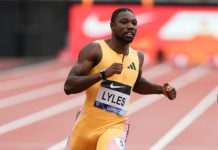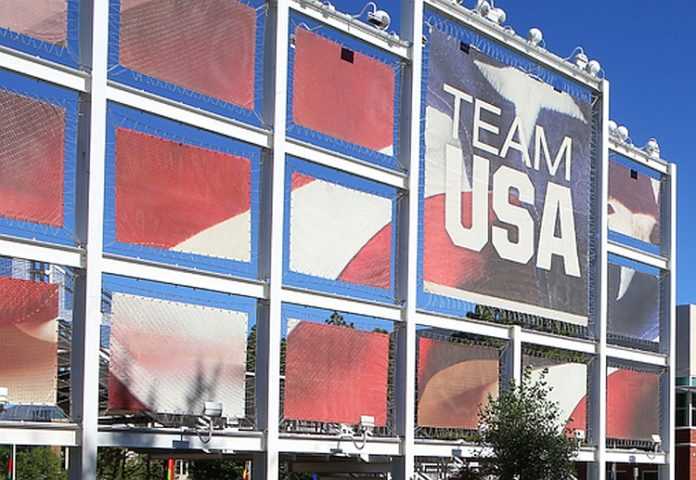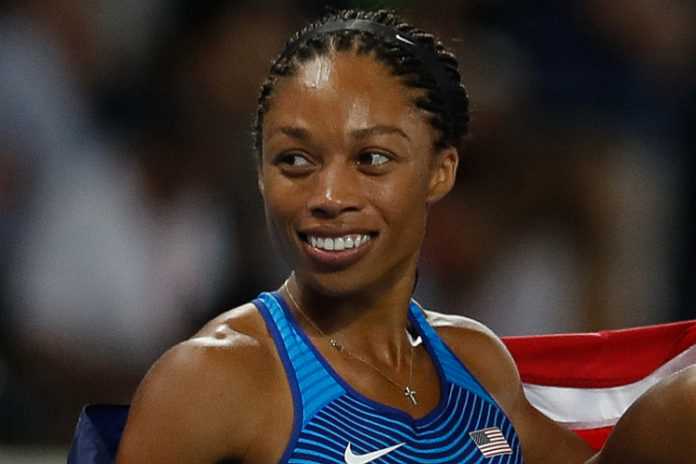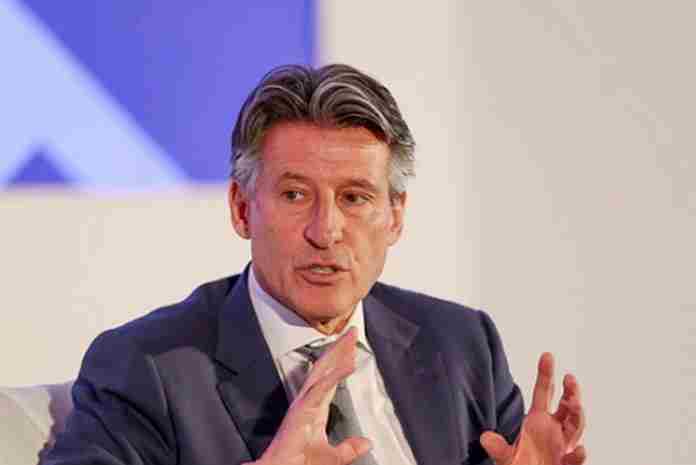★ The Sports Examiner: Surveying, monitoring and explaining the key competitive, economic and political forces shaping elite sport and the Olympic Movement. This site is free to view, with donations gratefully accepted to support our operating costs.
Comments? Click here. ★
★ Tell your friends to sign up for The Sports Examiner e-mails now, just in time for session-by-session coverage of the World Athletics Championships
coming this Friday! ★
The United States Olympic & Paralympic Committee is big. Really big. Bigger than all but one of the International Federations, and likely the third-richest Olympic Movement organization in the world.
The USOPC’s financial statements for 2021 were released at the end of June and show a complex, multi-layered organization that has come out of the most devastating period of the worldwide Covid pandemic with impressive total assets of $898.6 million.
With operations slowly returning to normal and the promotional push in advance of the 2028 Los Angeles Games and a possible Winter Games in Salt Lake City in 2030, it is possible to imagine the USOPC as a billion-dollar enterprise – on paper, anyway – by the end of this decade.
How does this 525-employee, 795-volunteer behemoth compare with the largest players in the Olympic Movement? Very well indeed; by total assets from audited financials (* = converted to U.S. dollars, from Swiss Francs):
● $5.609 billion: International Olympic Committee (end 2021)
Selected International Federations:
● $5.492 billion: FIFA (football; end 2021)
● $295.4* million: ISU (skating: end 2021)
● $221.6* million: FINA (aquatics: end 2021)
● $160.8* million: FIBA (basketball: end 2020)
● $133.0* million: FIVB (volleyball: end 2020)
● $132.2* million: FIS (ski & snowboard: end 2021)
● $104.7* million: UCI (cycling: end 2021)
● $55.6 million: World Athletics (end 2020)
● $49.0* million: IIHF (ice hockey: mid-2020)
● $45.3* million: FIG (gymnastics: end 2020)
Financial information for other National Olympic Committees was hard to come by, but the Canadian Olympic Committee had total assets of U.S. $174.7 million at the end of 2021 and the Japanese Olympic Committee had U.S. $72.2 million in assets (converted from yen) at the end of 2020. It’s worth noting that in Japan, 41.3% of its budget for fiscal year 2020 consisted of governmental subsidies.
The USOPC gets no government funding and is still bigger than everyone except the IOC and FIFA. Lots of numbers to show, so go slow. But it’s interesting.
The USOPC’s financials show a three-part organization: the USOPC’s operating division, the U.S. Olympic & Paralympic Foundation, which carries out fund-raising, and the U.S. Olympic Endowment, which has invested the $111.4 million the then-USOC received as its 40% share of the surplus from the 1984 Olympic Games in Los Angeles, and makes grants back to the USOPC itself off the investment income. The stated assets as of the end of 2021:
● USOPC: $497.9 million (operating)
● USOPF: $53.4 million (fund-raising)
● USOE: $492.4 million (endowment)
Of the USOE’s total, some $101.0 million is held on behalf of National Governing Bodies who placed their 20% share of the LA84 surplus with the USOC’s share for joint investment. And the USOPC itself borrowed $133 million during the pandemic and owes $131.1 million, with the notes due to mature in 2031.
Taking out all of the liabilities and holdings for others and the USOPC’s net assets are still a very healthy $568.1 million through the end of 2021. Wow.
So why can’t it spend what it wants on anything it wants?
Once you boil out the USOPC Foundation and the U.S. Olympic Endowment, the USOPC itself has assets of $265.2 million, and had income in 2021 of $459.9 million and expenses of $353.1 million for a net gain of $106.8 million in an Olympic Games year in 2021. The money came mostly from two sources:
● $205.5 million: IOC TOP sponsors and USOPC sponsors
● $191.0 million: IOC TV share and Olympic Trials TV sales
That’s 86.2% of all USOPC revenue for 2021. Contributions were $14.8 million to the USOPC and another $36.0 million to the USOPC Foundation, and there was investment income across all three entities of $50.9 million. Looking at the combined entities, 80.5% of all revenue came from sponsors and TV, with 18.4% from donations and investments; that’s 98.9%.
The money doesn’t come in so quickly in non-Olympic years: $208.2 million in revenue for 2020 and $205.2 million in 2019. So the IOC’s money makes a big difference, perhaps $250 million in an Olympic year and $135 million or more in a Winter Games year!
The USOPC is well aware of the interest in how much it pays athletes, and for athlete-support services. Beginning with the 2020 financial statements, a chart was added to break out the USOPC’s spending on direct-to-athlete payments, athlete support, direct-to-National Governing Bodies payments and NGB support services:
● 2020: $107.7 million, $31.8 million in athlete grants and $57.2 million in NGB grants
● 2021: $158.9 million, $46.1 million in athlete grants and $68.1 million in NGB grants
That’s a 48% increase in a year and a 45% increase in direct-athlete grants; it’s also important to note that some of the NGB grant money also ended up going directly to athletes. The biggest NGB payments for grants went to:
1. $6.8 million: U.S. Ski & Snowboard
2. $5.4 million: USA Track & Field
3. $5.1 million: USA Swimming
4. $3.3 million: USA Gymnastics
5. $2.3 million: USA Bobsled & Skeleton
The biggest recipients of direct-athlete-grant money:
1. $5.5 million: USA Track & Field athletes
2. $4.5 million: USA Swimming athletes
3. $2.9 million: USA Volleyball athletes
4. $2.8 million: U.S. Ski & Snowboard athletes
5. $2.7 million: U.S. Paralympic track & field athletes
So, for the clenched-teeth critics who scream that the USOPC spent only 10% on athlete payments ($46.1 million out of $459.9 revenue), the truer figure starts at 34.5% with the $158.9 million in payments to athletes, for athlete services and to the NGBs in cash and services.
Another chart shows the breakdown of $200.1 million (43.5%) spent on “Athlete Excellence” with $80.8 million shown for all athlete grants (18%), plus $40.9 million on Games Support, $23.1 million on Sports Medicine, $22.5 million on training facilities, $6.6 million on Sport Science and so on. This is the figure the USOPC shows as its funding commitment to athlete programs in 2021. And they did spend the money.
And let’s not kid ourselves: athletes need coaches, places to train, sports medicine help and that $40.9 million in support to get to Tokyo and other competitions and back safely.
The USOPC’s top executives are well paid for what they do. The final page of the 2021 financials shows the top 20 staff members by compensation, all of which had total pay (including benefits) of $285,159 or more.
Even with all this wealth, it’s not enough. The 2019 Borders Commission report, which reviewed the USOPC’s structure in the aftermath of the Nassar abuse scandal in gymnastics, noted:
“Elite athletes from other countries often receive significant government funding. The USOPC must establish some program of baseline financial support directly to Athletes, although the Commission realizes that different categories of Athletes will receive different levels of support. The Commission further recognizes that any significant source of such funds must be creatively sourced beyond the current revenue streams.”
The USOPC’s 2019 financials showed direct athlete and NGB support of $96.6 million, which has increased by 22.3% to $121.5 million for 2021. The soon-to-meet Commission on the State of the U.S. Olympics and Paralympics will be scrubbing these numbers to better understand what they mean and former USOPC Athletes Advisory Council chair Han Xiao is a Co-Chair and was also a member of the Borders Commission, which provides continuity between these review efforts.
Also looking carefully, not so much at what has happened in the past, but what can happen in the future, will be new USOPC Board Chair Gene Sykes, who will take over in January 2023.
Even with so much money on paper, the USOPC needs more money to create annual athlete stipends and closer cooperation with the National Governing Bodies to develop well-defined competition and training environments that lead to success on the field and create new enthusiasm for Olympic sports as the U.S.’s unequaled NCAA training system teeters on collapse.
The USOPC is rich, but although the rest of the world does not want to hear it, it needs to get richer.
Rich Perelman
Editor
You can receive our exclusive TSX Report by e-mail by clicking here. You can also refer a friend by clicking here, and can donate here to keep this site going.
For our updated, 620-event International Sports Calendar for 2022 and beyond, by date and by sport, click here!




























